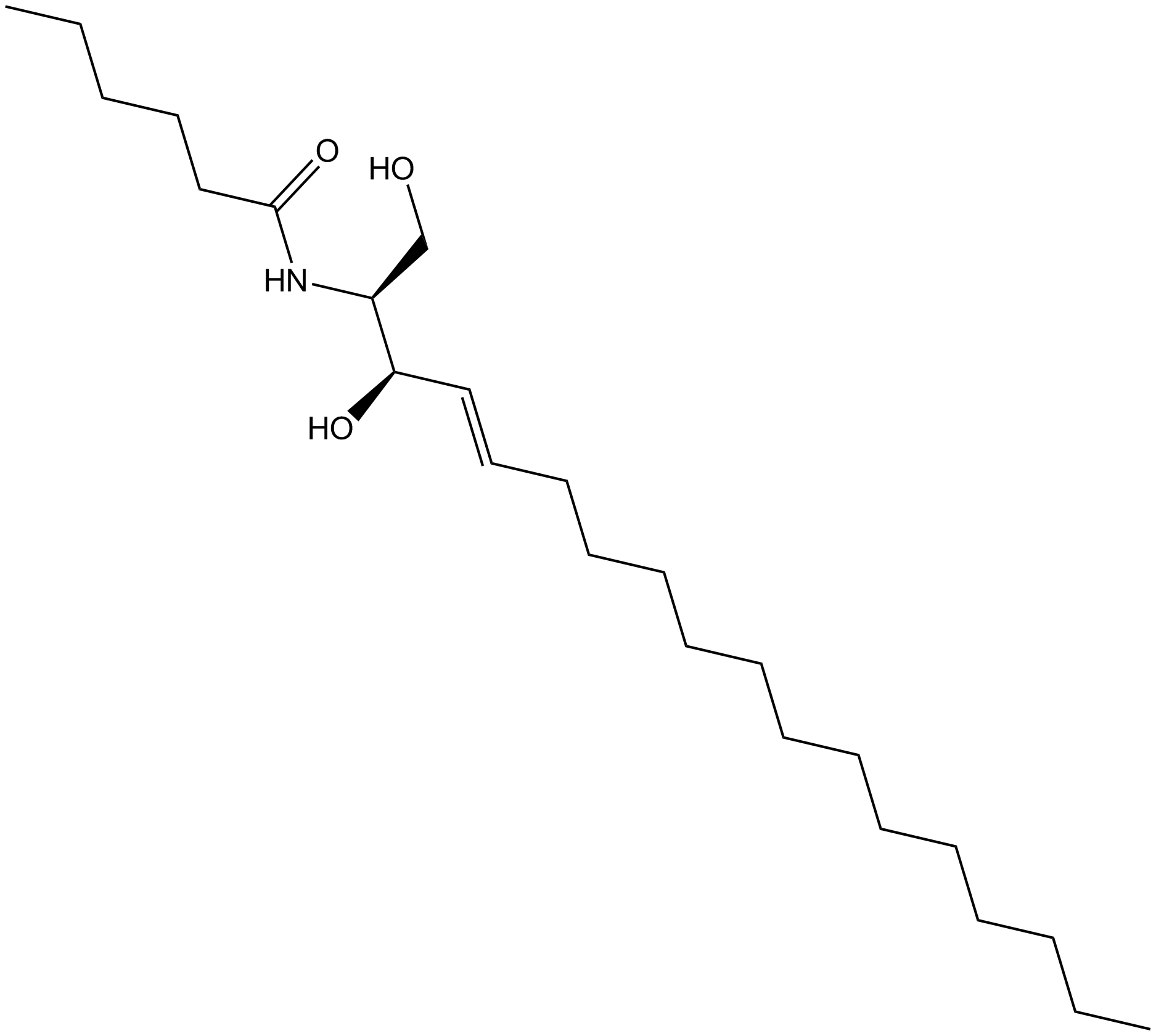C6 Ceramide (d18:1/6:0) (Synonyms: N-hexanoyl-D-erythro-sphingosine) |
| Catalog No.GC11079 |
C6-ceramide, a ceramide pathway activator, shows activity against a variety of cancer cell lines. C6-ceramide can be used as an adjuvant for chemotherapeutic agents, to enhance anti-tumor effects.
Products are for research use only. Not for human use. We do not sell to patients.

Cas No.: 124753-97-5
Sample solution is provided at 25 µL, 10mM.
C6 ceramide is a cell-permeable analog of naturally occurring ceramides. With a longer carbon chain than C2 ceramide, it is somewhat more hydrophobic, and may more closely mimic the effects of natural ceramides. [1] C6 ceramide mediates many diverse biological activities including apoptosis,[2] activation of protein phosphatase 2A, [1][3] and inhibition of the mitochondrial respiratory chain.[4] It also enhances the expression of COX-2 in rat granulosa cells [5] and stimulates the growth of bovine aortic smooth muscle cells. [6] C6 ceramide acts in neuronal axons to inhibit neurite growth. [7]
Reference:
[1]. Dobrowsky, R.T., and Hannun, Y.A. Ceramide stimulates a cytosolic protein phosphatase. J. Biol. Chem. 267(8), 5048-5051 (1992).
[2]. Cai, Z., Bettaieb, A., El Mahdani, N., et al. Alteration of the sphingomyelin/ceramide pathway is associated with resistance of human breast carcinoma MCF7 cells to tumor necrosis factor-α-mediated cytotoxicity. J. Biol. Chem. 272(11), 6918-6926 (1997).
[3]. Dobrowsky, R.T., Kamibayashi, C., Mumby, M.C., et al. Ceramide activates heterotrimeric protein phosphatase 2A. J. Biol. Chem. 268(21), 15523-15530 (1993).
[4]. Gudz, T.I., Tserng, K.Y., and Hoppel, C.L. Direct inhibition of mitochondrial respiratory chain complex III by cell-permeable ceramide. J. Biol. Chem. 272(39), 24154-24158 (1997).
[5]. Santana, P., Llanes, L., Hernandez, I., et al. Interleukin-1β stimulates sphingomyelin hydrolysis in cultured granulosa cells: Evidence for a regulatory role of ceramide on progesterone and prostaglandin biosynthesis. Endocrinology 137(6), 2480-2489 (1996).
[6]. Augé, N., Andrieu, N., Nègre-Salvayre, A., et al. The sphingomyelin-ceramide signaling pathway is involved in oxidized low density lipoprotein-induced cell proliferation. J. Biol. Chem. 271(32), 19251-19255 (1996).
[7]. Posse de Chaves, E.I., Bussière, M., Vance, D.E., et al. Elevation of ceramide within distal neurites inhibits neurite growth in cultured rat sympathetic neurons. J. Biol. Chem. 272(4), 2038-3035 (1997).
Average Rating: 5 (Based on Reviews and 3 reference(s) in Google Scholar.)
GLPBIO products are for RESEARCH USE ONLY. Please make sure your review or question is research based.
Required fields are marked with *




















